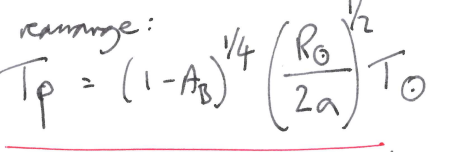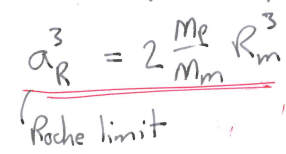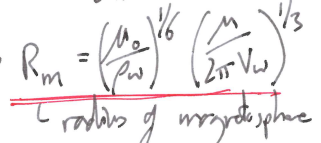Solar System
1/90
There's no tags or description
Looks like no tags are added yet.
Name | Mastery | Learn | Test | Matching | Spaced |
|---|
No study sessions yet.
91 Terms
Evidence of interior convection in the Sun
Surface granulation (light and dark spots on the photosphere)
Helioseismology
study of standing pressure waves visible at surface
carry information about temp profile, pressure profile, density profile, rotation
informs numerical models about sun’s interior e.g. boundary between convective and radiative regions
Sunspots
cooler regions of enhanced magnetic fields
revealed by Zeeman splitting of absorption lines
formed from differential rotation of the sun warping magnetic fields, preventing convection in some areas, leading to cooler regions
What causes magnetic flux loops in the Sun?
magnetic dynamo
requires bulk shearing
shearing comes from differential rotation (equator rotates faster than poles) and tachocline (core rotates as a solid body)
Seeing the solar atmosphere
extended atmosphere, Corona, visible during eclipse
light scatters from electrons
can see photosphere in optical where sun goes from optically thick to thin
in extreme UV, gamma and X-ray, can see emission from hot plasma. Shows temperature inversion.
How is the emitted plasma confined?
confined in mag. field loops
Lorentz force
How can coronal plasma escape?
travels along ‘open field lines’ via solar winds
Mass loss of the sun consequences
significant for ang. mom. loss and spin down as wind co-rotates with sun
leads to significant magnetic braking
explains slow rotation of sun
Heliosphere
Bubble blown in interstellar medium by solar wind ~ 120 au
Solar flares
sudden releases of magnetic energy and X-ray emission
driven by magnetic reconnection in coronal flux loops
Coronal Mass Ejections
space weather at Earth and causes aurora
erosion of planetary atmospheres
Where are dwarf planets, asteroids and comets found?
asteroid belt
Kuiper belt
Oort cloud
Nebular Hypothesis
sun and planets formed together from gravitational collapse of gas with shared ang. mom.
comes from planets being in mostly circular orbits in ecliptic plane, well aligned with sun
Definition of a planet
in orbit around the sun
in hydrostatic equilibrium (spherical)
has cleared its neighbourhood orbit
Equilibrium temperature of a planet

Geocentric model of Solar System
Earth centred
occasional retrograde motion explained with epicycles (circular motion around an average circular motion)
Heliocentric model of the Solar System
Copernicus
retrograde motion explained as Earth overtakes planets
but still required epicycles as orbits assumed circular
Kepler’s Laws
planet orbits the sun in an ellipse with the Sun at a focus of the ellipse
a line connecting a planet to the Sun sweeps out equal areas in equal time
P2 = ka3 (k found from Newton’s laws of gravity)
Eccentricity values corresponding to allowed orbits
e = 0 => circular
0<e<1 => elipse
e = 1 => parabola
e > 1 hyperbola
Lagrangian points
areas where gravitational potential is locally flat
Hill Sphere
Approximate sphere of influence around a body where orbits can be stable

Alternative 3 body case
one mass dominates, other bodies treated as perturbations
leads to secular resonance in eccentricity and inclination
e.g. Milankovitch cycles
What happens if periods between bodies have integer ratios
perturbations grow in mean motions resonances
often drives systems unstable
Tidal interactions
come from differential gravity across an object
lead to tidal bulges
bulges offset by rotation
grav. force acts to synchronise rotation with the orbit
tidal locking
Tidal forces and eccentricity
eccentric orbits misalign tidal bulges after synchronisation
dissipation of energy and heating of moon through internal friction
orbit loses energy at constant ang. mom.
circularisation of orbit
Roche Limit
When tidal forces on a body are greater than the self gravity holding it together, leading to the breaking apart of the body.

Earth interior
Differentiated into layers
iron core
silicate mantle
crust of lighter minerals
Heavier materials sank when planet molten
How is Earth’s interior probed?
seismology
p-waves (pressure: solids and liquids)
s-waves (shear: solids only)
shadow zones of these waves allow interior to be mapped
Refractory compounds
solids at high temperatures
How can we tell Earth was formed in a warm environment?
interior dominated by Fe, O, Si, Mg
deficient in volatile elements e.g. H, C, N
formed in warm environment where H2O, CH4, CO2, NH3 didn’t form solid
How does Earth’s interior remain hot?
Radioactivity
What is the origin of Earth’s strong magnetic field?
magnetic dynamo
Plate tectonics details
fractured lithosphere moving on convecting asthenosphere
new crust created at mid ocean ridges
reveals polarity reversals in Earth’s magnetic field
strong evidence for a dynamo operating in Earth
Where do volcanic Islands form?
Above mantle plumes
Lunar AND Martian Seismology results
thick lithosphere
molten core
no global mag. field => no dynamo
evidence of global mag. field in past
marsquakes and moonquakes
Interior of Venus
no seismology
volcanically active but lacks plate tectonics and magnetic field
not well understood
Mercury interior
high density indicates oversized iron core
iron core plus tidal heating may explain weak mag. field
may have lost mantle in giant collision
Moon surface
heavily cratered => ancient
age of craters measured using radioisotope dating
lunar surface covered with regolith - fine powder from many impacts
Surface ages of planets
mercury - >4Gyr
Mars - ~2Gyr
Venus- ~1 Gyr
Earth ~ surface <600Myr old, rocks found up to 3.8 Gyr
What causes pancake domes on Venus
lithosphere too thin to support large volcanos
volcanos collapse under their own weight
Earth atmosphere
1 Bar, ~80% N, ~20% O
greenhouse effect raises surface temperature
temperature inversions in stratosphere (UV heating in ozone layer) and thermosphere (X-ray heating)
Mercury and Moon atmospheres
surface gravity too low to retain significant atmospheres
Mars atmosphere
~1% Earths, 95% CO2, 3% N
Tp~ 189K, Ts ~ 130 - 308K
surface temp range due to day/night, seasons and poor heat redistribution
Venus atmosphere
~100 x Earth, 96% CO2, 4% N
Tp ~ 230K, Ts ~735K
Surface temperature equation

Why are Earth and Venus’ atmospheres so different?
Earth’s climate stabilised by negative feedback loop from carbon-silicate cycle
On Venus, positive feedback loop led runaway greenhouse
Earth not heated enough for runaway greenhouse
What happened to water on venus?
water split by UV photolysis into H & O
supported by excess deuterium on Venus which is less vulnerable to evaporation than H
Atmosphere mass escape rate
lighter elements more vulnerable to escape (Jeans Escape)
driven by solar X-ray heating of upper atmosphere
also driven by solar wind for planets without global mag. field
escape rate energy limited

What protects water on Earth from UV photolysis?
Ozone layer
trapped lower in atmosphere and condenses to clouds
Siderial day
true rotation period of Earth
Rotation of planet details
Earth and Mars rapid rotators
Mercury (3:2 resonance with orbit) and Venus (retrograde rotation) slow rotators due to tidal interactions with Sun
Tides also slowing rotation of Earth, seen in sea shell fossil record
Spin obliquity
precession of spin axis due to torque from Sun
obliquity of Mars varies due to small torques from other planets
obliquity of earth stabilised by moon
Gas giant
dominated by H + He
Ice Giant
mass dominated by ices of H2O, NH3, CH4
volume dominated by H, He
Density profile for planet

Central density of a planet

core of Jupiter and Saturn
rocky/ icy cores
surrounded by layer of metallic H
Saturn has smaller metallic layer
Oblation of Jupiter and Saturn
flatter at poles
caused by fast rotation
bends spherical symmetry
How can we probe the interior of gas giants?
gravitational potential gives a measurement of density profile and north south asymmetries
see banding pattern extends to deep interior
implies global convection
Magnetic field of gas giants
convection, rotation, conducting interior imply magnetic dynamo
explains strong mag fields
Consequences of strong magnetic field
aurorae at poles
radio emission via cyclotron/synchrotron emission
Radius of magnetosphere

Magnetic fields of ice giants
strong despite lack of metallic H
complex corkscrew magnetospheres due to high spin obliquity and dipoles misaligned with spin axis
Internal heat of Jupiter
heat from gravitational potential energy left from formation
ongoing differentiation from He rainout, releasing gravitational potential
Internal heat of Saturn
ongoing differentiation from He rainout, releasing gravitational potential
Internal heat of neptune
Ongoing differentiation of metals/rocky
What causes Jupiter’s banding pattern?
bright zones from clouds of ammonia ice
dark belts from molecules from UV photochemistry
Why is Jupiter’s banding pattern reversed in IR?
high altitude clouds are cold and dark
cloud free belts are brighter as seeing into high temps
Where do storms form in Jupiter’s atmosphere?
Shearing boundaries
Why is Saturn’s banding pattern muted?
clouds form deeper in colder atmosphere
occasional storms bring reflective NH3 clouds at higher altidtudes
Neptune muted banding pattern
NH3 ice clouds deeper
Where does Neptune’s blue colour come from?
enhanced methane abundance
methane atoms absorb in red optical
Uranus atmosphere
almost featureless
faint banding
white clouds now visible, potential seasons
Trend in density for the moons of Jupiter
decreases with increasing separation
due to increased ice content
due to temp gradient in disc moons formed from and tidal heating
Io
rocky core
volcanic
young surface
Europa
rocky core
young icy surface
resurfaced by liquid water from tidally heated sub-surface ocean
Ganymede and Callisto
mass dominated by ice
older cratered surfaces
geologically active
Titan
thick N2 atmosphere
liquid methane lakes
Enceladus
tidally heated liquid water oceans below thin ice crust
Triton
probably a dwarf planet from Kuiper belt due to retrograde orbit
may have destabilised early Neptune
Saturn Rings
Ice particles
Complex structure due to orbital resonance with moons
Thin due to collisions
Probably formed from icy moon
Snowline
Boundary between terrestrial and giants
Planet formation by core accretion
formation of young sun & protoplanetary disc from gravitational collapse
Condensation of dust particles
Growth of particles by pair-wise collisions up to planetesimals
Planetesimal growth to protoplanets, stops at isolation mass when Hill Sphere swept out annulus of disc
More massive cores form beyond snowline where ices form
Massive cores accrete gas
Terrestrials assembled via giant collisions
2 problems with planet formation by core accretion theory
particles eroded by high velocity collisions
Gas drag causes large particles to fall to the sun
Solutions to problems in planet formation by core accretion
structures in disc can trap particles
Instabilities can cause clumps of particles shielding from headwinds
Difference in formation of gas and ice giants
Gas giant from runaway process that forms disc annulus
Ice giant from dispersion of gas during slow gas accretion phase
Evidence for giant collisions in the early solar system
composition of Earth’s moon same as Earth
High density of mercury, missing mantle
Spin obliquity of Uranus
Extremophiles
Bacteria that survive in extreme conditions e.g. around hydrothermal vents
Fundamental requirements for life
energy source
Carbon source
Liquid water
Faint young sun paradox
Young sun not warm enough to support liquid water on Earth
Yet it must have been present
Solved through greenhouse effect
Possible places for life in solar system
mars - in habitable zone, atmospheric pressure just high enough, surface water abundant in past
Venus - possible detection of phosphine, a bio marker
Europa and Enceladus - extremophiles around hydrothermal vents in sub surface ocean
Titan - exotic life in methane lakes?